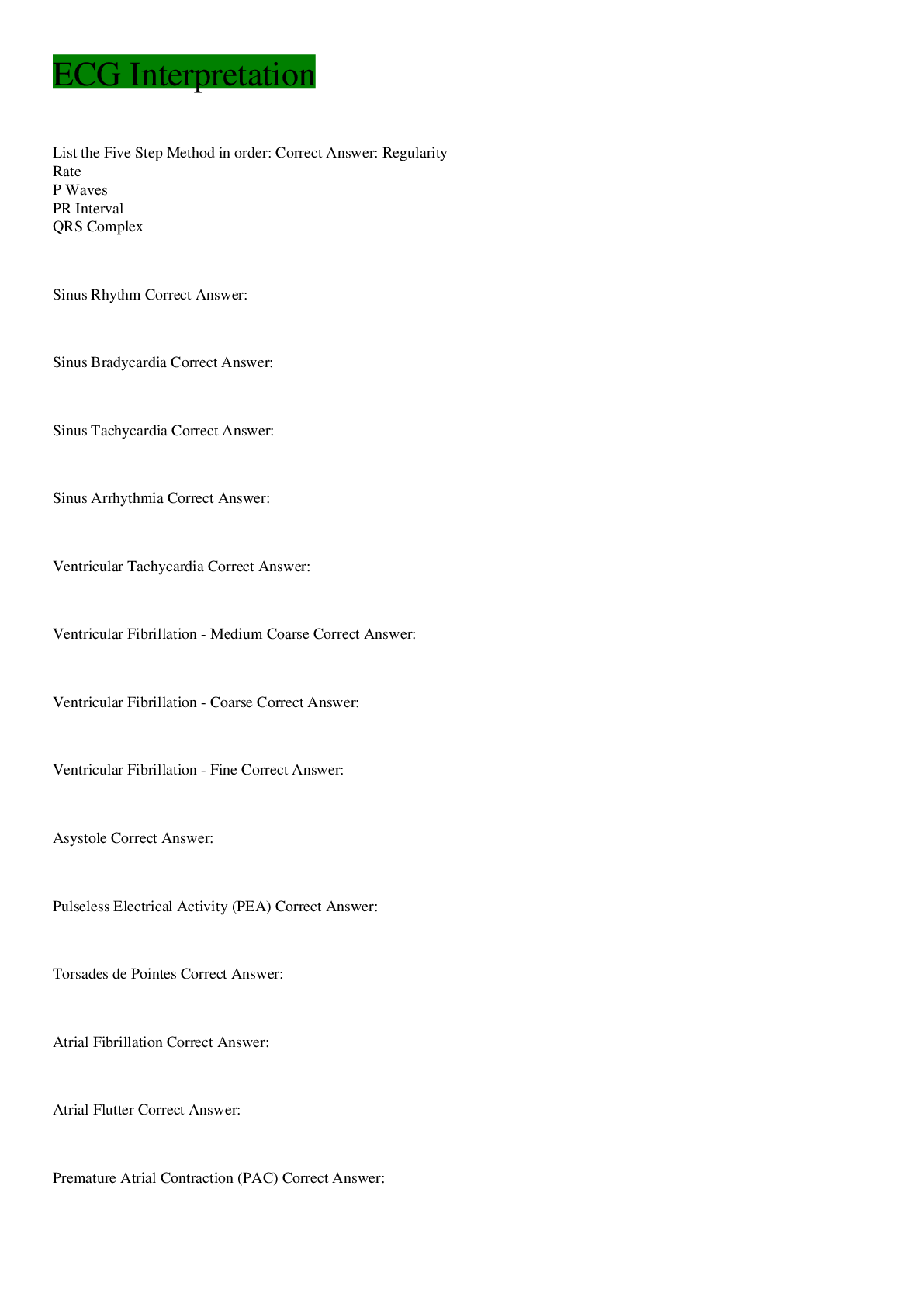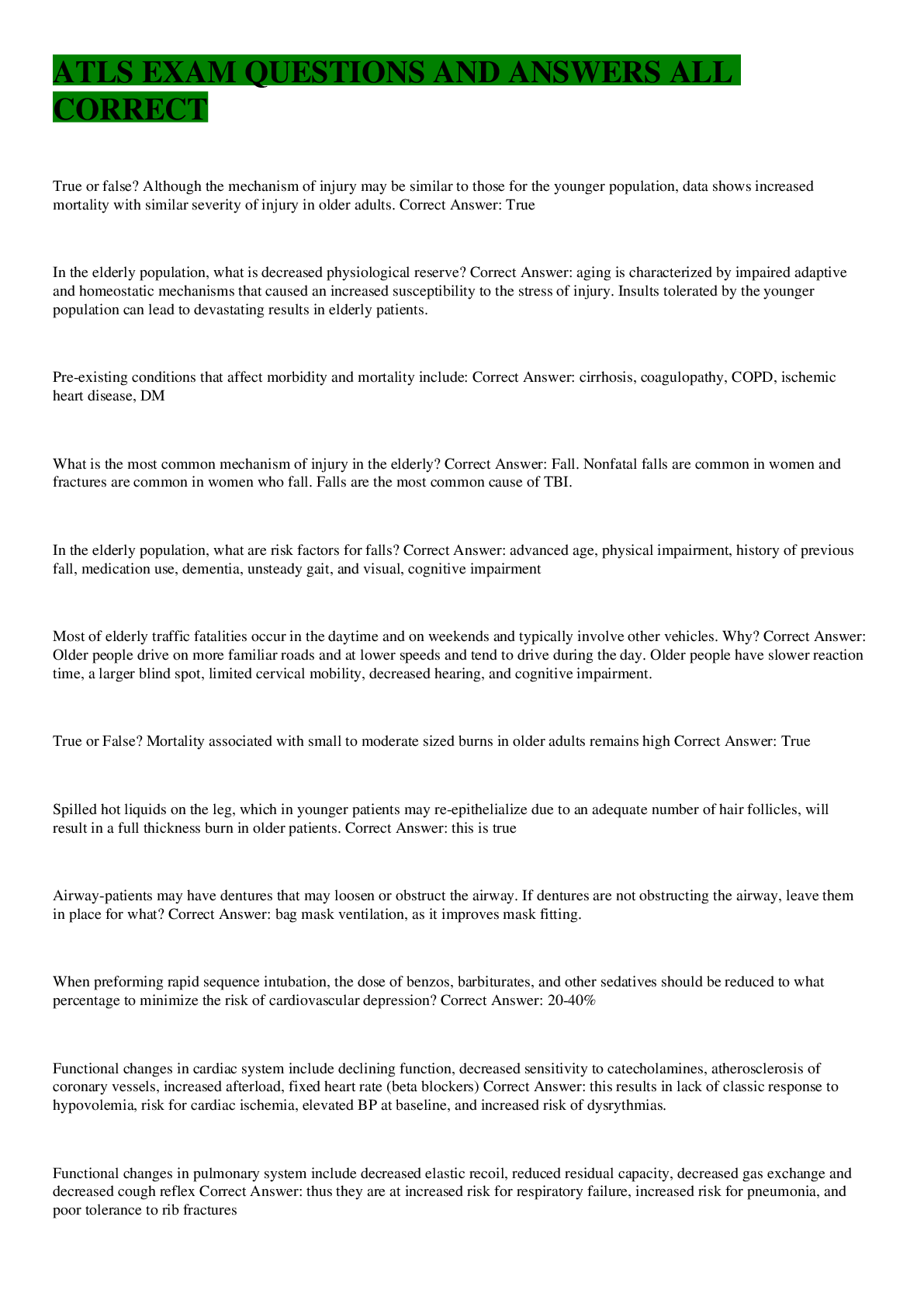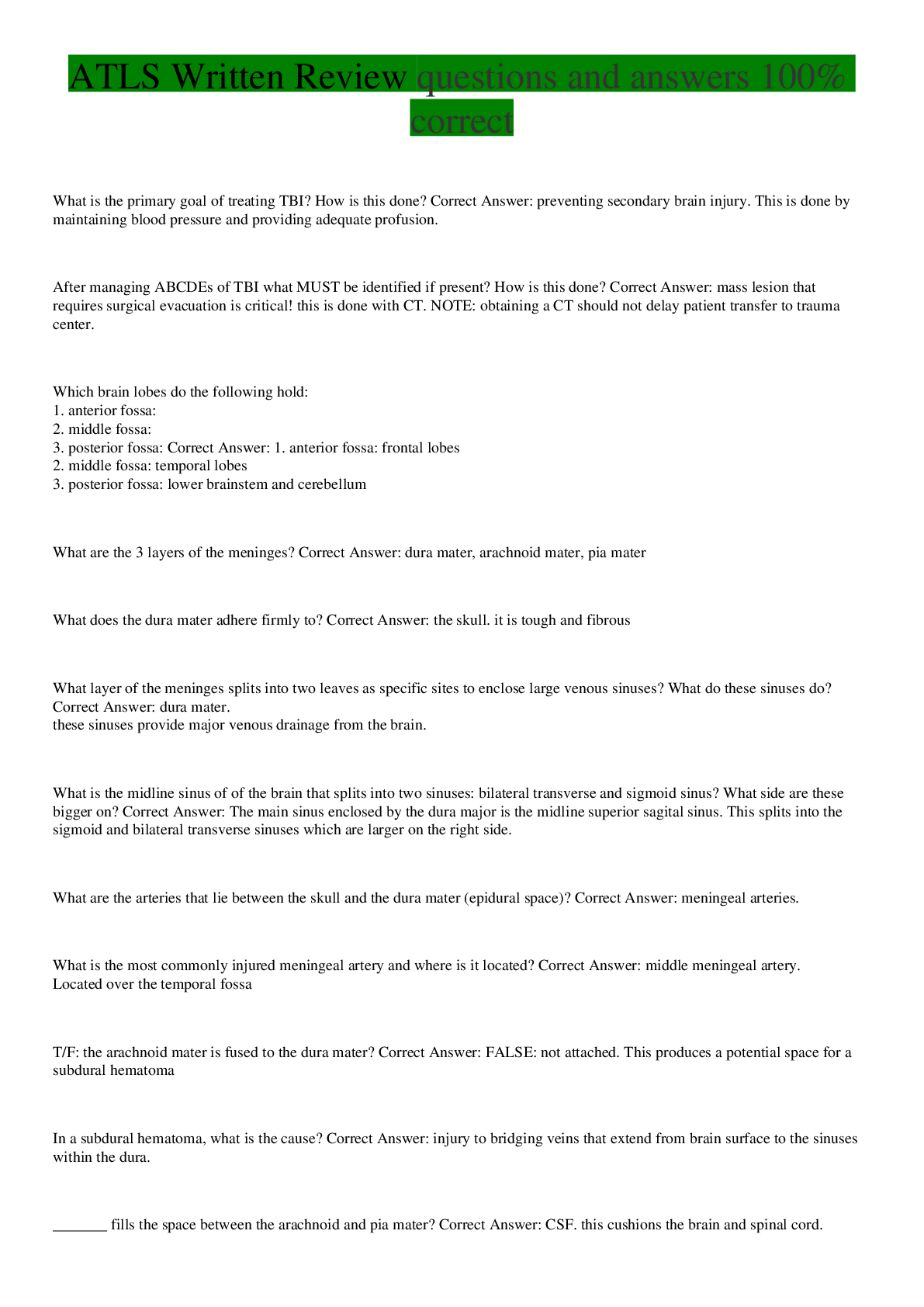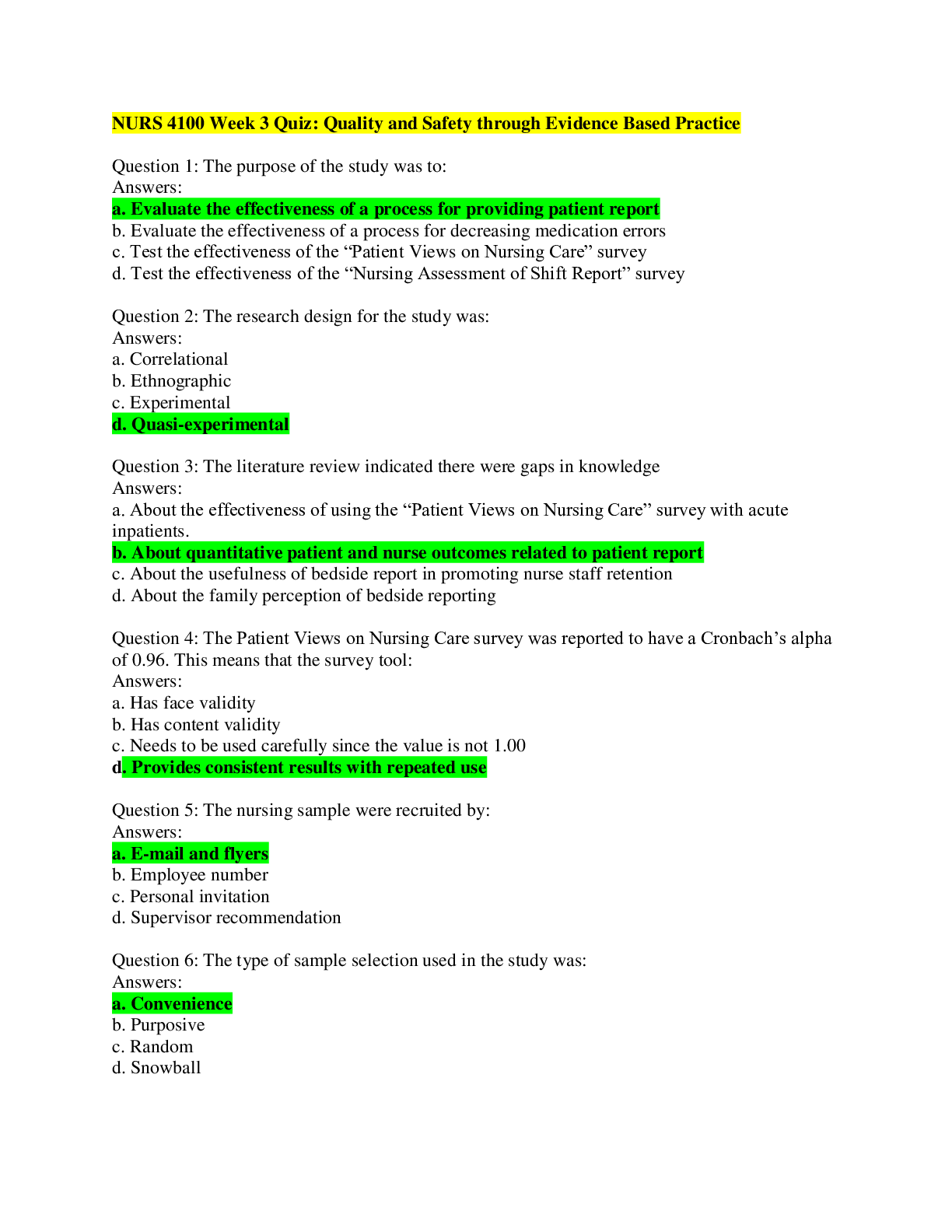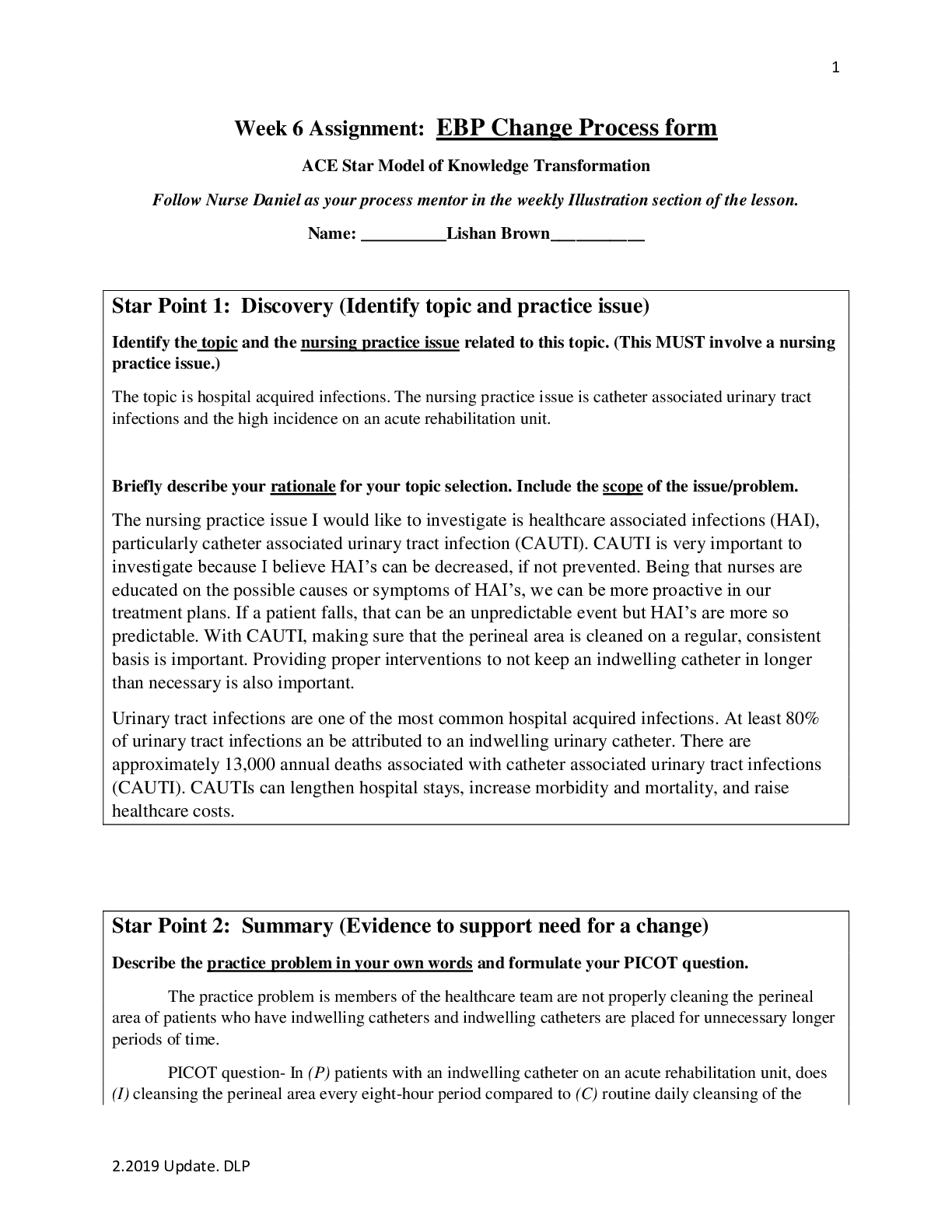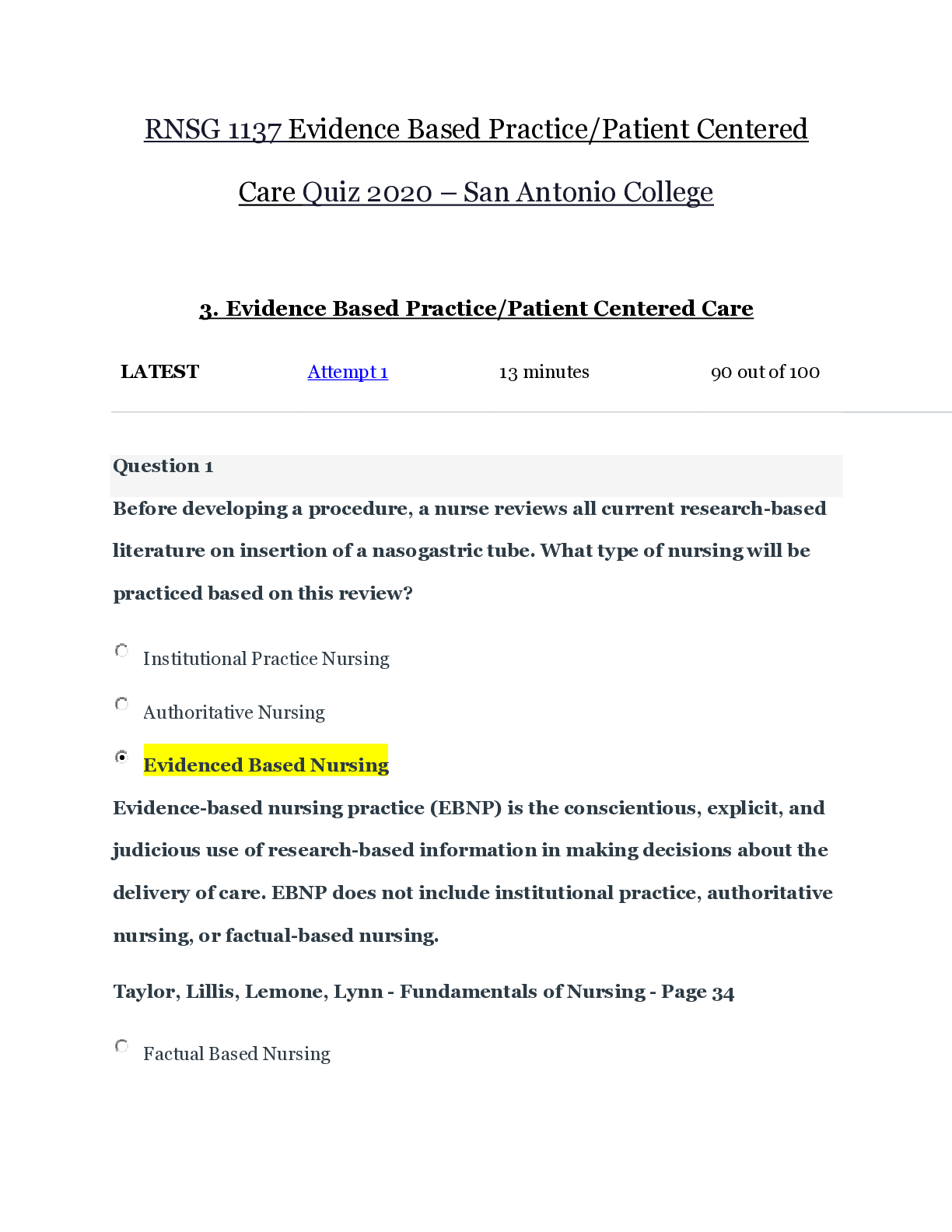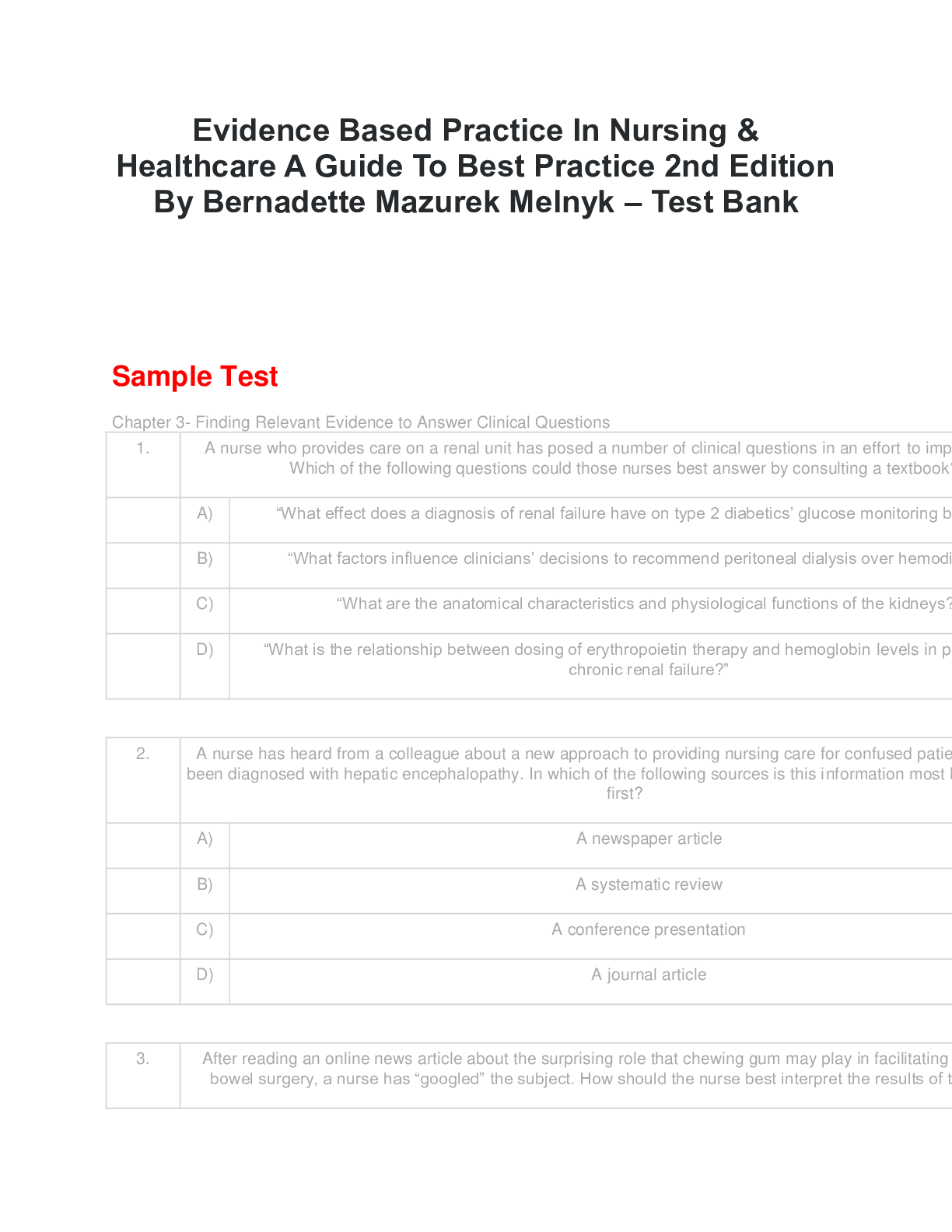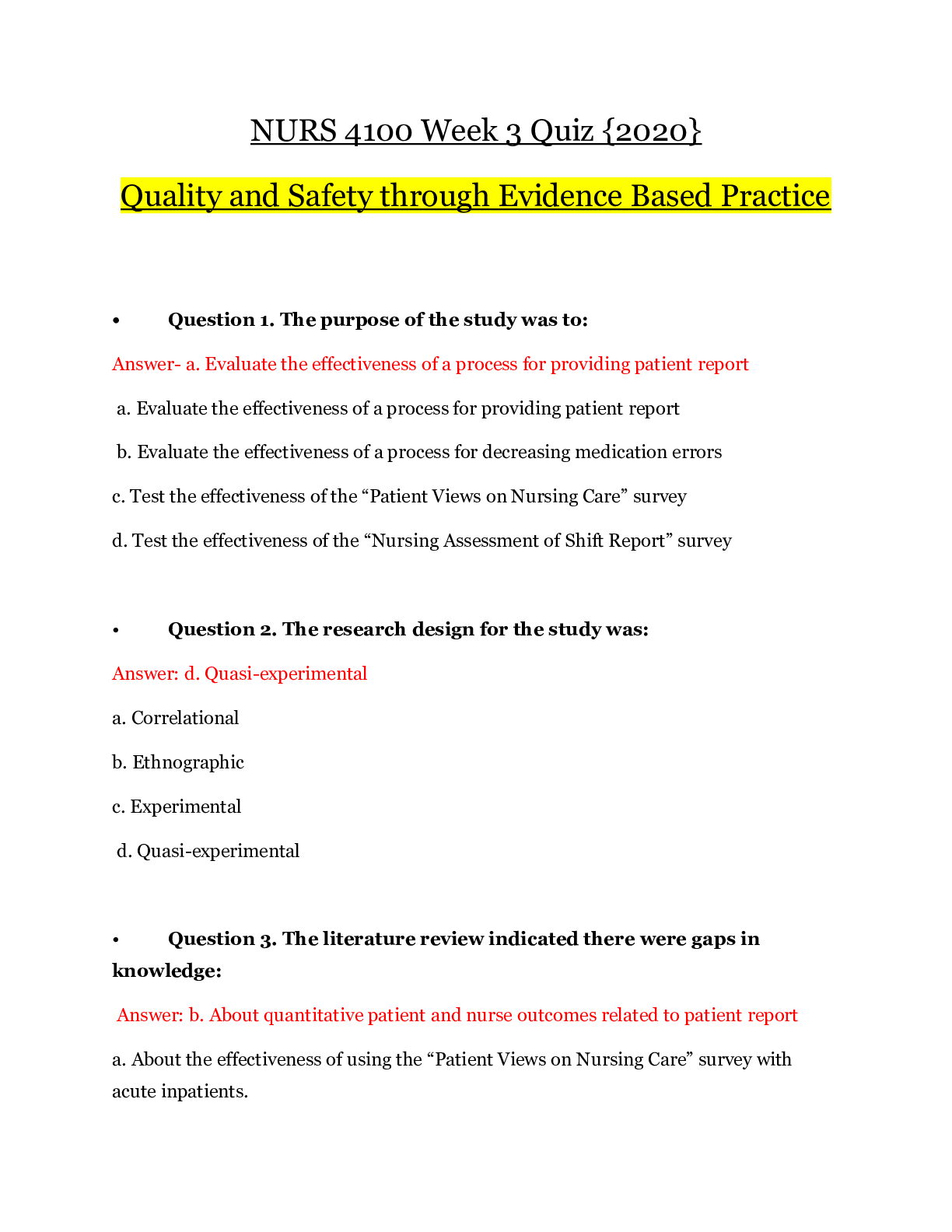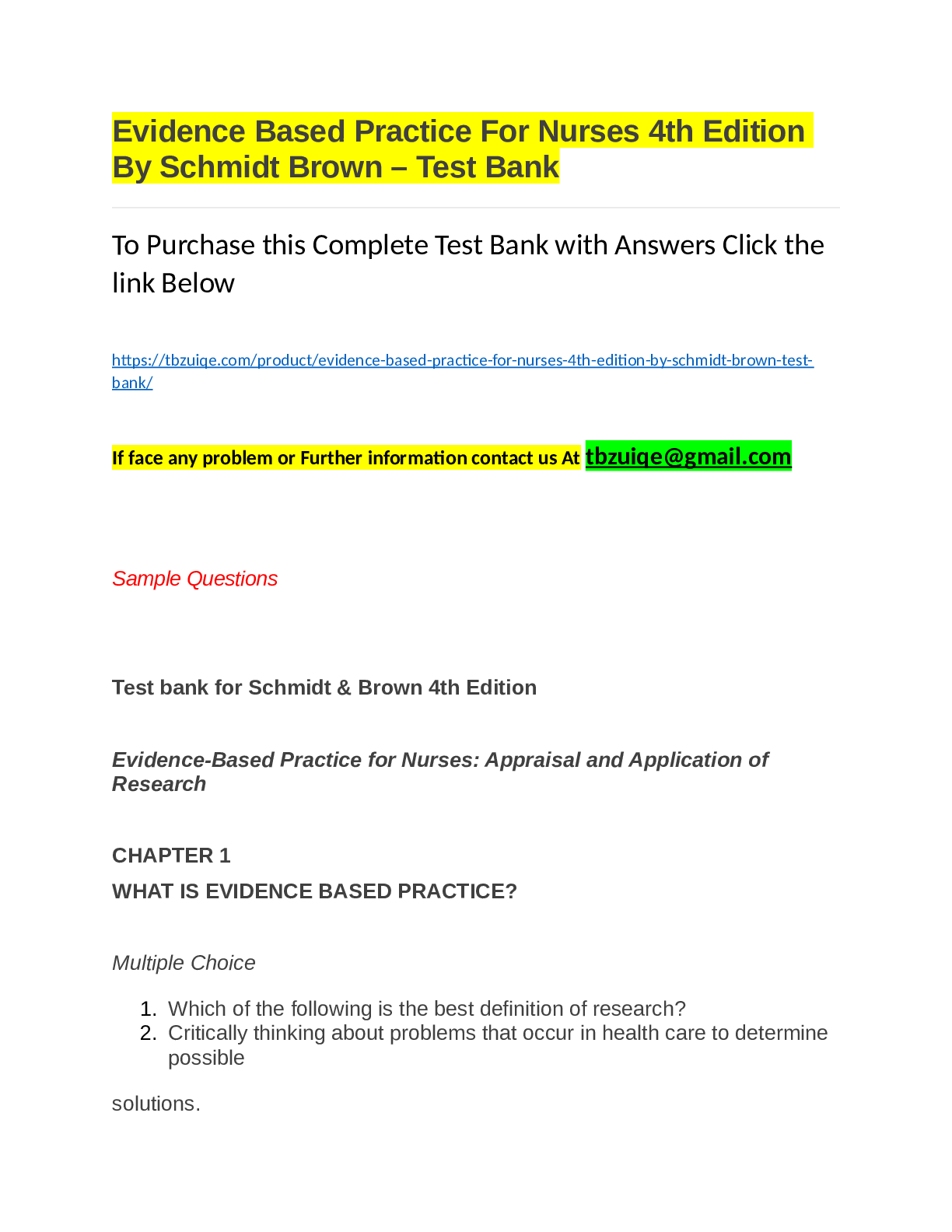Health Care > EXAM > NR505_ Week7_ MSN EBP Project Proposal/Advance Research Methods: Evidence Based Practice (All)
NR505_ Week7_ MSN EBP Project Proposal/Advance Research Methods: Evidence Based Practice
Document Content and Description Below
MSN EVIDENCE-BASED PROJECT PROPOSAL 2 MSN Evidence-based Project Proposal Nursing research has provided significant knowledge to the nursing practice. It has shaped health care and positively impac... ted the health of people all over the world by promoting health and healthy lifestyles and by advancing health care quality. Today’s complex health problems require a multiple discipline approach. One of these health problems is the use of opioids to manage chronic pain. Family nurse practitioners will frequently encounter patients who are experiencing acute and or chronic pain and will be required to address this issue. The epidemic of opioid use and overdoses, practitioners are looking for alternatives for managing pain. This public health crisis has motived this writer to research the effects physical therapy has on patient’s who experience chronic pain in the hope of discovering that prescription pain medication can be reduced. It is necessary that all efforts are made to seek alternative options for pain management to increase patient’s functional ability, reduce pain, and improve outcomes. This paper will discuss research and evidence-based practice, identify a nursing concern, review PICOT/PICo questions, theoretical framework of evidence-based proposal, review research literature, research approach, design, sampling, and proposed implementation with a change model. Overview of Evidenced-Based Practice Project Zimmerman (2017) explains that evidence-based practice or EBP, is when clinical research is incorporated into the nursing practice to provide the best and most up to date nursing care possible. Evidence-based practices eliminates practices based on traditional and folklore approaches. It is a comprehensive process by which information is drawn from clinical experiences and other research which has been tested, studied, evaluated, and utilized to benefit MSN EVIDENCE-BASED PROJECT PROPOSAL 3 or improve patient care practices and their outcomes. Research involves asking specific questions about current practices and researching outcomes related to that question. When research shows that a change in practice would positively benefit patient care outcomes, a collaborative approach between multiple disciplines, in the implementation of the new research findings leads to the establishment of evidenced-based practices. The development of evidence-based practice is being fueled by the increasing public and professional demand for accountability in safety and quality improvement in health (Stevens, 2013). The evidence-based practice process begins with identifying a topic of interest or area of concern. The nurse must then begin to research literature to find answers to address the problem while evaluating the credibility of the source. The next step of the process is to assimilate the findings into practice and evaluate the outcomes. Finally, dissemination of the findings to peers in the medical profession. The scientific basis of evidence-based practice comes from nursing research. EBP is crucial in nursing practice to improve patient outcomes and to ensure patients receive quality care. This nurse is perusing the Family Nurse Practitioner (FNP) tract. This writers goal is to work either in a physician’s office or for a hospital as a Hospitalist. As the baby boomer generation ages, nursing will see an increase in comorbidities. Patient’s will frequently report pain either acute or chronic which affects their current or long term daily lives. Family Nurse Practitioners will need to be able to offer a range of options for the management of the patient’s pain. To effectively promote and provide quality care for complex health conditions, research on health concerns is necessary for patients to receive the highest quality of care. By utilizing evidence-base practices, health care professionals are giving patients the best chance for positive outcomes. MSN EVIDENCE-BASED PROJECT PROPOSAL 4 Identification of the Nursing Concern to be Improved A nursing concern that this writer feels needs to be improved is related to the administration and proscribing of opioid pain medication. In the hospital setting, one of the main goals of nursing, is pain control. Just about everyone who is hospitalized experiences some form of pain and has pain medication. Most everyone has intravenous pain medication their entire stay at the hospital, even after the acute phase of their pain is diminishing. When people are sick or injured they will experience some level of pain. Discovering what pain level is acceptable, educating patient’s and nursing staff to utilizing alternate ways for patients to manage their pain, should be a focus, instead of always administering another dose of pain medication. Health providers should limit the amount of pain medication prescribed and focus on alternative pain control prior to discharging a patient home. Daren (2016) shares clinical recommendations from the CDC about opioid therapy when it comes to chronic pain outside of active cancer, palliative and end of life care. Suggesting that physical therapy, behavior therapy, exercise, and alternate pain medications be used for chronic pain. As the Opioid epidemic in America is exposed, more recommendations on pain control are being put into place. As a future Family Nurse Practitioner discovering alternate pain methods to control the patient’s pain could lead to an increase in quality of life and would have more control over their pain and not be limited to prescriptions for relief. Discovering a lasting pain control lifestyle that does not depend on a pill could significantly improve patient’s long-term outcomes. According to Rudd (2016), in 2015, there were 52,404 deaths linked to drug overdoses, with 63.1% involved opioids. Methadone overdoses have declined however heroin and synthetic opioids, excluding methadone, have increased greatly. The Centers for Disease Control and Prevention (2018) report that overdoses from prescribed opioid are a leading factor in the last 15 MSN EVIDENCE-BASED PROJECT PROPOSAL 5 years. The quantity of pain medications prescribed since 1999 has nearly quadrupled, yet American’s haven’t reported overall an increase of the amount of pain they feel. Cultural beliefs about pain can influence the change in pain management. The American culture tends to want what they want now. If they are in pain, the quicker they can get out of it the better. A pill can help to control their pain in less than an hour, where physical therapy, acupuncture and meditation take effort on the patient’s part and can lead to long-term pain management and may take months to master. We are reminded that if a patient gave low marks in the Press Ganey patient satisfaction survey that it could affect the hospital financially, so nurses and physicians administer and prescribe pain medication because it is a quick fix to the immediate problem and makes patient’s happy. However, pain medications are not frequently discontinued, patient education, and the lack of alternative pain control contributes to the longterm pain medication use, addiction, and the current opioid crisis in America. Changing the mentality at hospitals on pain management and patient education can both be an effective approach to the over prescribing of pain medication. Modify thinking from, “We are not a drug rehab” and “Just make the patient’s happy” to asking what is best for the patient currently and the asking why. Once the acute phase of pain is over the implementation of alternate pain control may help reduce long term narcotic and opioid use. A qualitative study was conducted regarding the perspectives of providers and patients on opioids and alternative treatments to manage chronic pain. Penney et al. BMC Family Practice (2016) suggests that educating patients on realistic expectations for pain management along with therapy options may lead to increased patient and provider satisfaction. This writer’s area of focus will be related to opioid use and chronic pain management. [Show More]
Last updated: 1 year ago
Preview 1 out of 28 pages
Instant download
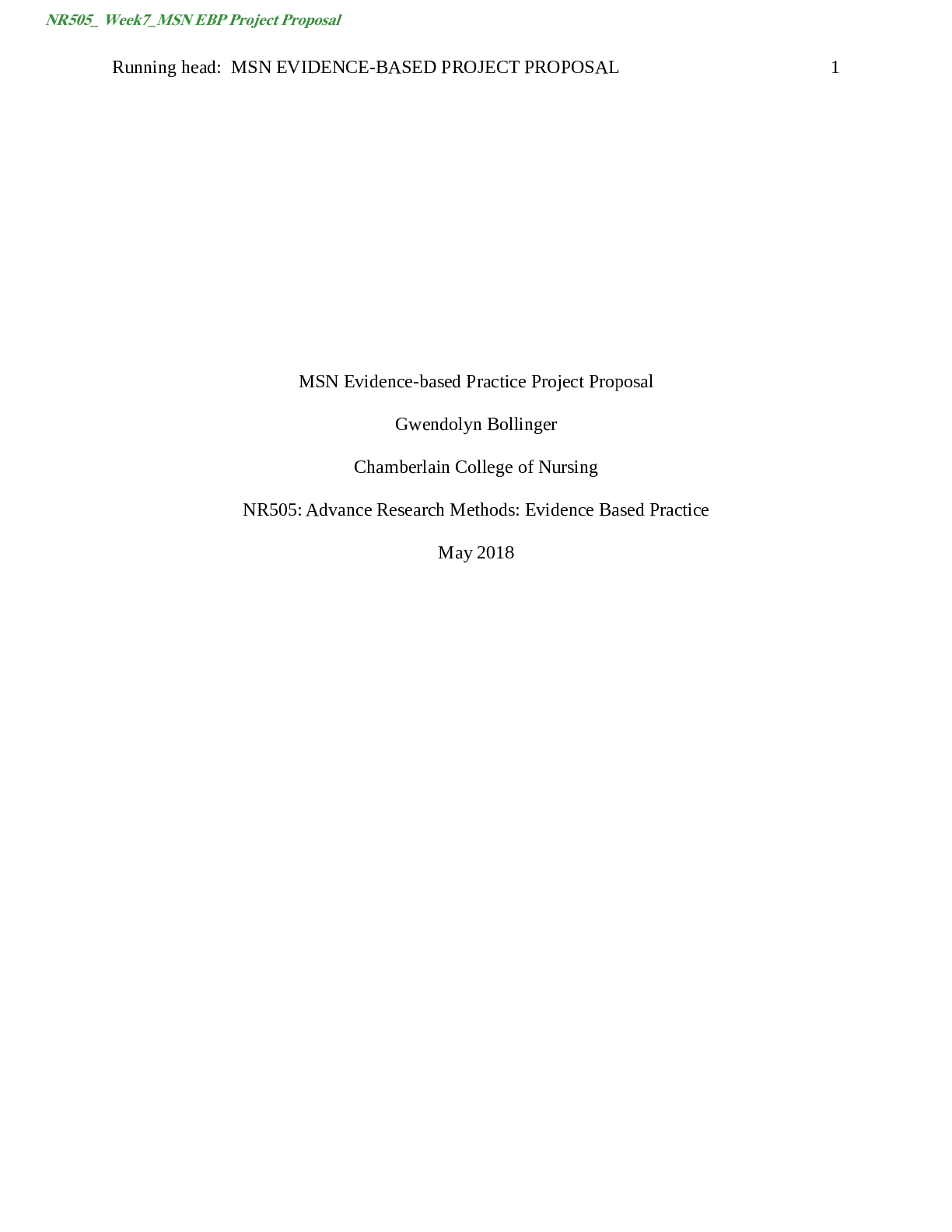
Buy this document to get the full access instantly
Instant Download Access after purchase
Add to cartInstant download
Reviews( 0 )
Document information
Connected school, study & course
About the document
Uploaded On
Aug 22, 2022
Number of pages
28
Written in
Additional information
This document has been written for:
Uploaded
Aug 22, 2022
Downloads
0
Views
42




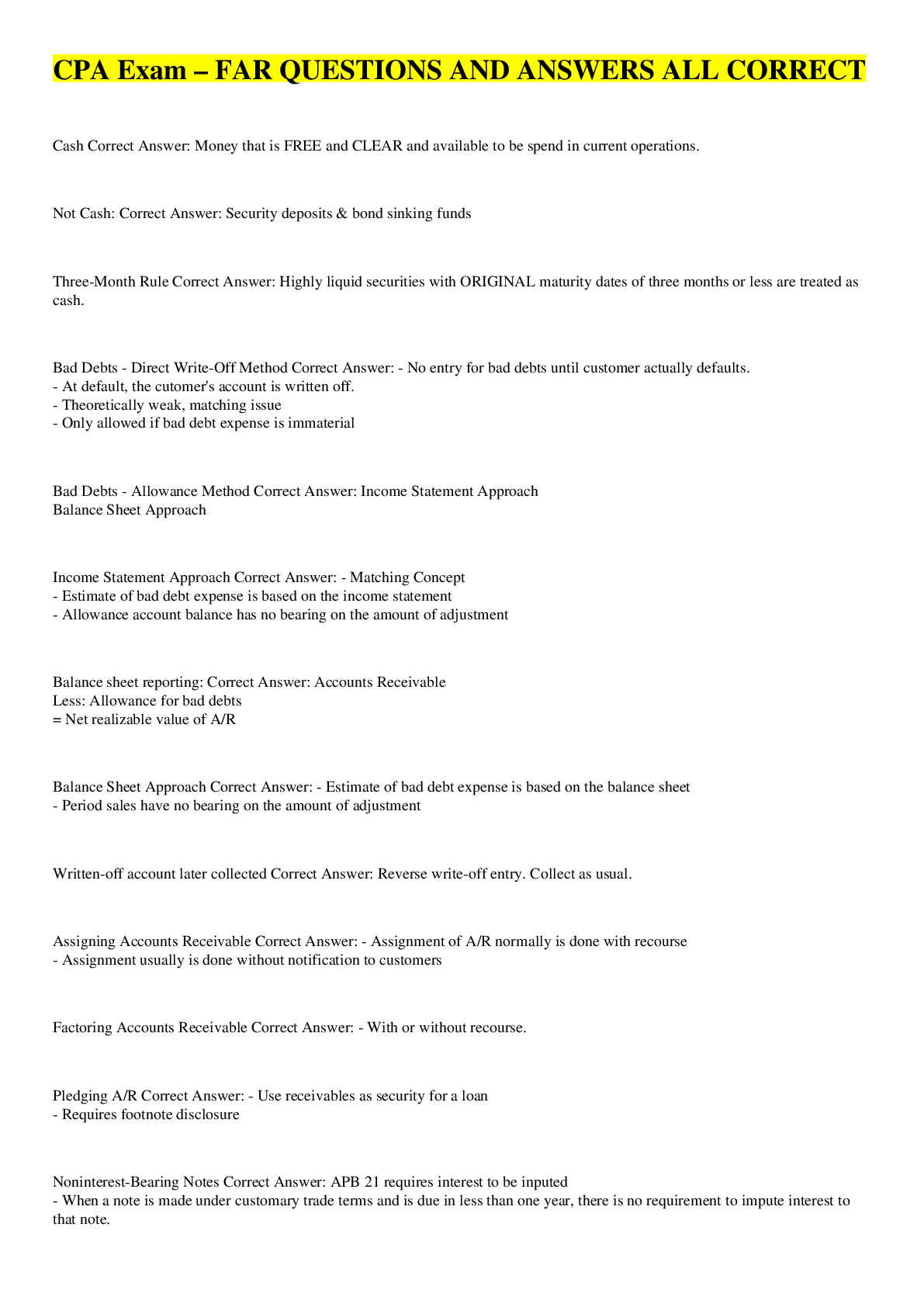
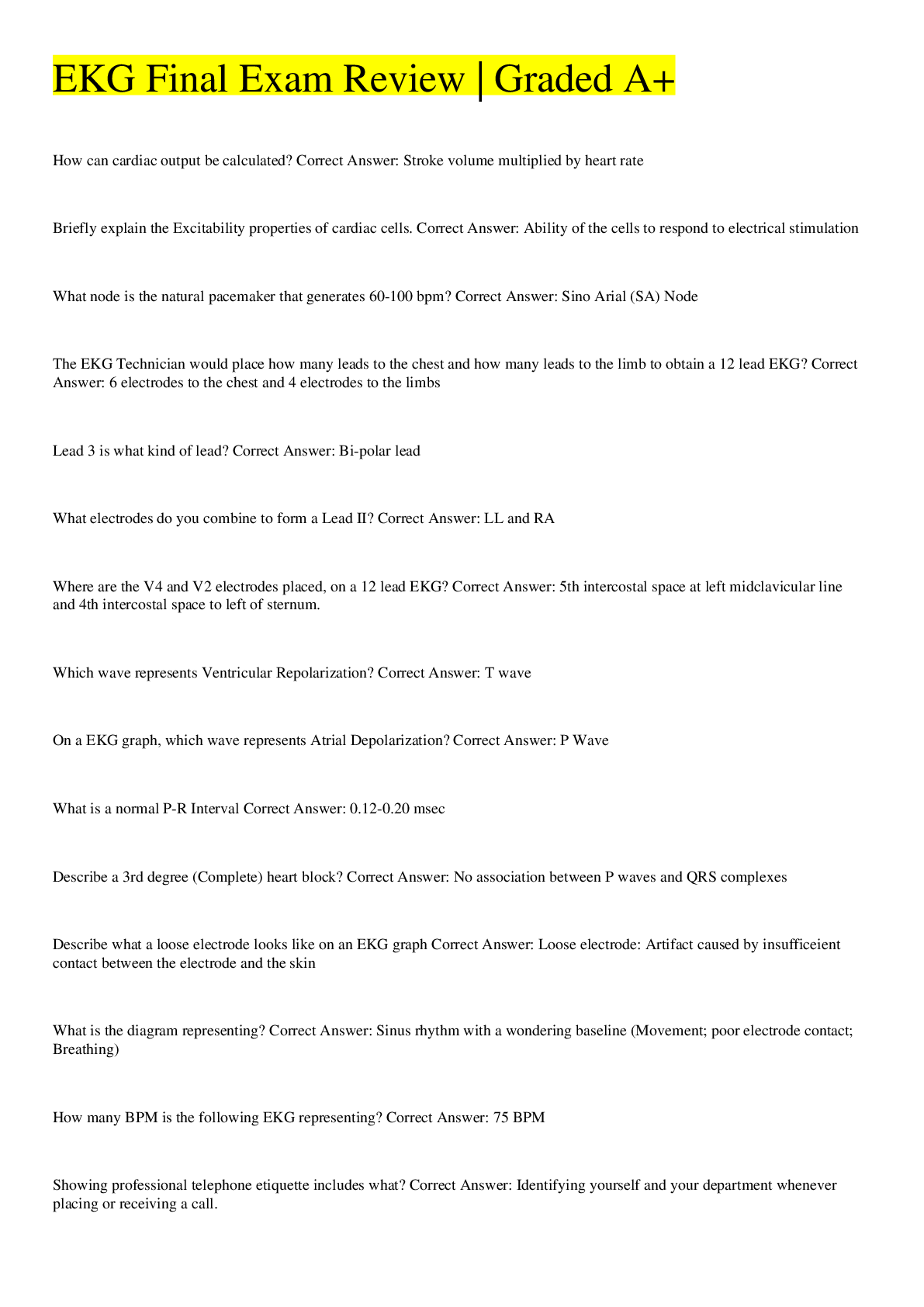

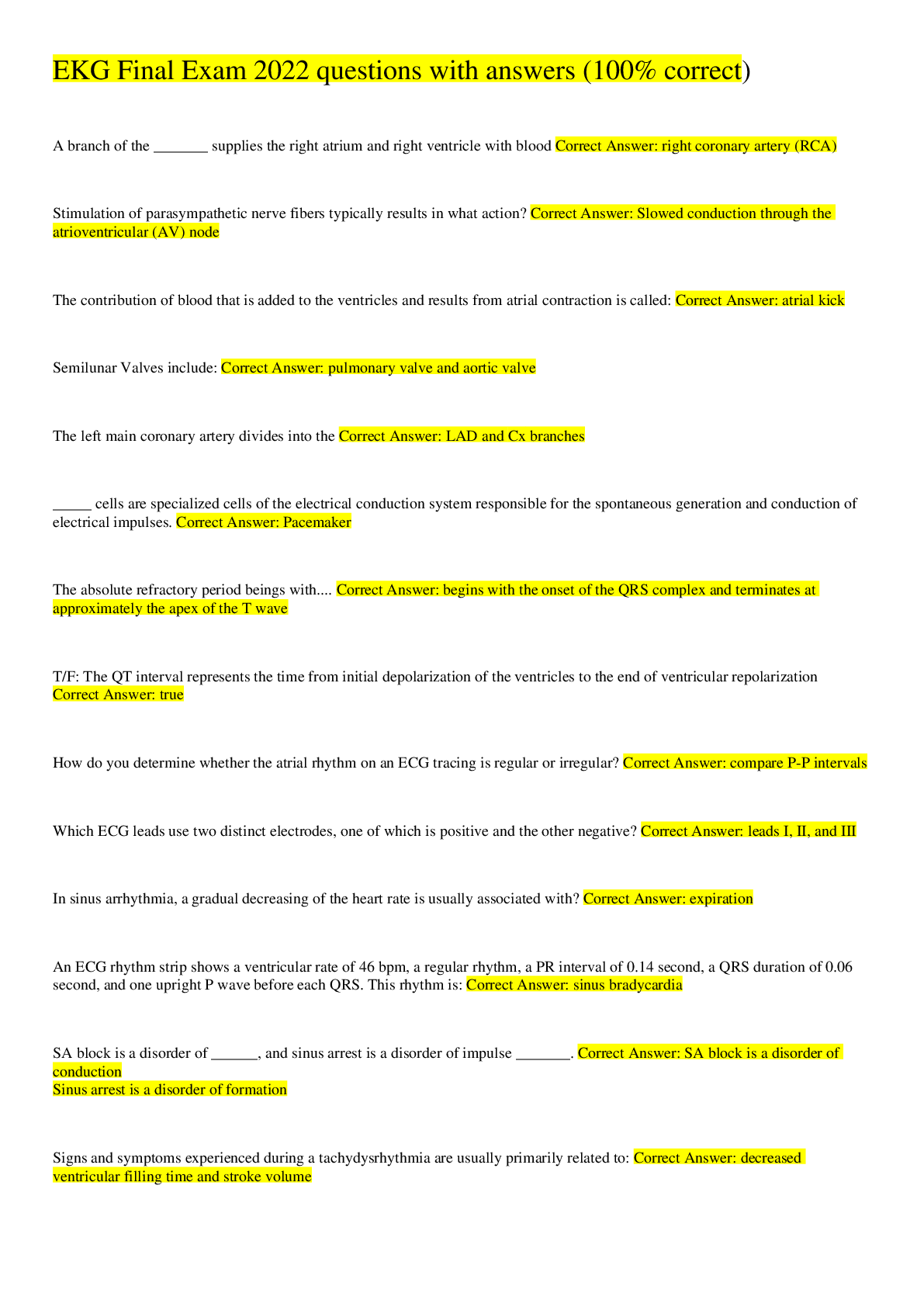
.png)
